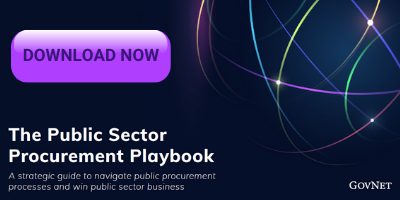What Is the Tendering and Bidding Process?
Tender processes can be drawn out and seemingly complicated. For some, it can seem so complex it puts them off from targeting public sector contracts as viable areas for business growth. The entire process is well structured, including stringent selection processes based on satisfying predetermined criteria. It involves a lot of preparation on the bidder’s side and a lot of evaluation on the contract issuer’s side.

While no two tender processes are the same, here’s what the overall tendering and bidding process looks like.
- Contract Publishing
- Contract Searching
- Pre-Qualification Questionnaire
- Invitation to Tender & Response
- Evaluation and Scoring
Contract Publishing
Public sector organisations will find they need a product or service to satisfy a certain requirement. This could be something like supplying construction materials or, as a more recent example, supplying PPE for hospitals.
At this point, public sector contracts over the value of £10,000 will be published on Contracts Finder. Using the online service, businesses can search for contracts that can be satisfied with their product or service.
In other circumstances, existing customers may ask organisations to tender for work when a contract they operate is close to expiring.
Contract Searching
This is the stage where suppliers actively look for contracts to bid on. Each organisation will have its own criteria for what constitutes a contract worth bidding for. For example, it might be the right size for their capabilities and within the right industry.
Early research in this phase is wise, allowing the potential supplier to sift through which contracts apply to them and begin developing their bid based on the contract's requirements.
Pre-Qualification Questionnaire
When a contract has been found that seems like a good opportunity, the business can express its interest. They’ll need to fill out a Pre-Qualification Questionnaire (PQQ).
This is a pre-tender document, enabling the tender issuers to sort which companies can provide the right service from those that can't. Completing a PQQ means you qualify to supply what’s needed in a contract. Only those organisations that are pre-qualified will be invited to tender.
There are several types of PQQ:
- PQQ: This is the general list of questions a contractor must answer.
- PAS 91: Developed by the British Standards Institute (BSI), PAS 91 reduces the need for suppliers to fill in multiple PQQs for potential clients.
- SQQ: The Standard Selection Questionnaire. This helps to simplify the selection process for smaller firms. It’s a way of showing suppliers don’t meet any of the reasons that could exclude them from eventually winning the contract.
When the PQQ is submitted, companies are filtered depending on suitability.
Invitation to Tender & Response
An Invitation to Tender (ITT) or tender document is the formal document issued by the procurement authority. It details the intricacies of the project and invites those filtered organisations to submit a formal bid.
The ITT is given to organisations who’ve been determined to have the right financial stability, experience, trading history, quality and capability to deliver. This means multiple organisations may have received an ITT. Responding parties will need to provide evidence they can supply exactly what the procurement authority is looking for.
No two ITTs are alike and they vary from industry to industry. The time to create a response also differs, but usually will be around three to four weeks - the deadline will be present in the ITT itself.
The response must be of the highest quality, well-written, concise and accurately portray technical solutions and pricing proposals to satisfy the tender's requirements. This is the real opportunity for organisations to stand out from the competition. A tender response should include:
- Case studies or examples of previous work.
- Examples of best practices and customer support.
- Details on how your company differs from the rest.
- Proof of certifications required by the tender (such as ISO certifications).
Evaluation and Scoring
At this point, tender responses will be evaluated and scored, usually shortlisting a number of responses before selecting a winner. In some cases, further questions may be asked if the ITT issuer needs to clarify certain things in the tender response.
Potential suppliers will be evaluated on quality, capability and value for money - but it isn't just about being the cheapest.
The public sector organisation issuing the contract will look for the most economically advantageous offer, which would be the highest quality response with the best price. This is known as MEAT - the Most Economically Advantageous Tender.
The areas of evaluation which make up MEAT include:
- Technical ability
- Quality
- Social impact
- Environmental benefits
- Accessibility
- The overall proposed plan
- Innovation
- Timeframe
- Customer service
In all circumstances, responding suppliers should ask for feedback from the ITT issuers for the sake of continuous improvement. This usually helps to identify companies where their response has come up short and lost them points.
The ITT issuer will then produce a scorecard of all the tender responses received, so organisations can see where they’ve ranked. At this point, if an organisation has ranked highly in certain categories, this response should be saved in a bid library to help create tender responses in the future.
The organisation that has scored the highest will be offered the contract. Those who don’t meet the scoring requirements or answer mandatory questions will likely be rejected straight away.
While this run-through details the major parts of the procurement process, the reality is a lot more complex, requiring many hours of hard work and innovation. If you’re looking for insights on how to best win public sector contracts, download our guide.
The Public Procurement Playbook
Want to learn more about the public sector procurement process and win more public sector business? Download the Public Procurement Playbook.
Topics Covered Include:
- Public Procurement Trends & Stats
- How to Target and Find Contracts
- Improving Sales Potential & Outreach Tips
- Tips for Winning Contracts
- Managing the Bid Process
- Links to Other Useful Resources



